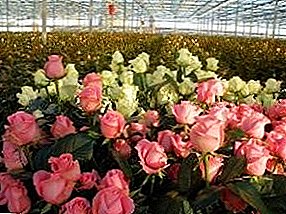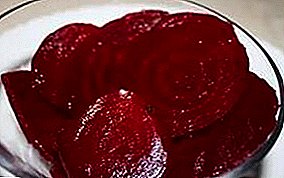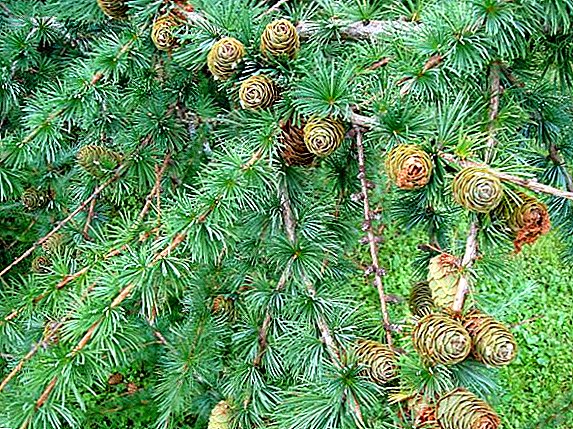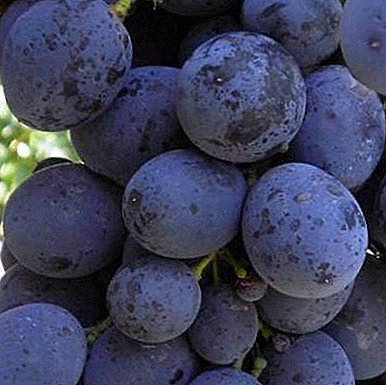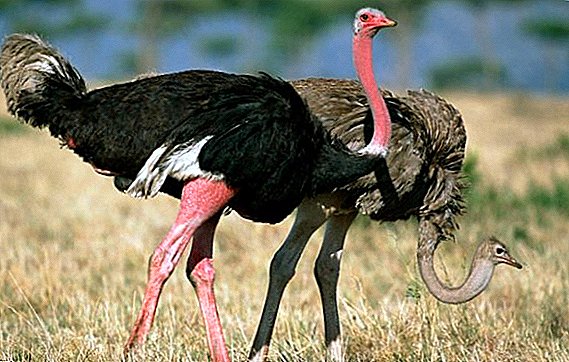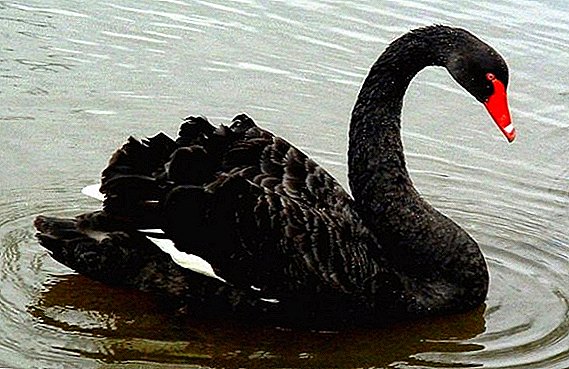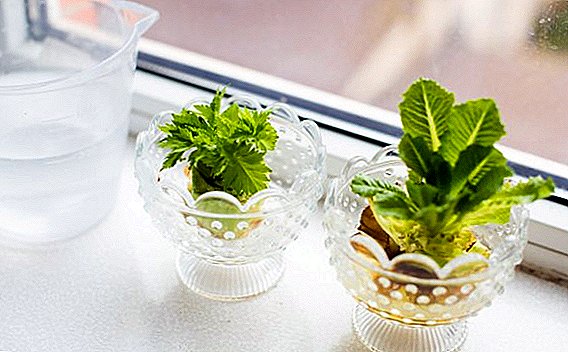 Celery is one of the most useful vegetables, and unpretentious in the care. It is easy to grow at home in a pot. How to do it correctly, read below.
Celery is one of the most useful vegetables, and unpretentious in the care. It is easy to grow at home in a pot. How to do it correctly, read below.
Types and description of celery
There are 3 types of celery:
- Root - already from the first year of cultivation the plant forms a large root vegetable weighing about 1.5 kg. The root crop has an uneven surface, is painted in greenish-gray color and all is covered with small roots. The ground part is represented by hollow petioles with huge leaves. Nutritional and medicinal value are the root and tops of the plant. In the context of white flesh, has a loose structure and exudes a specific flavor.
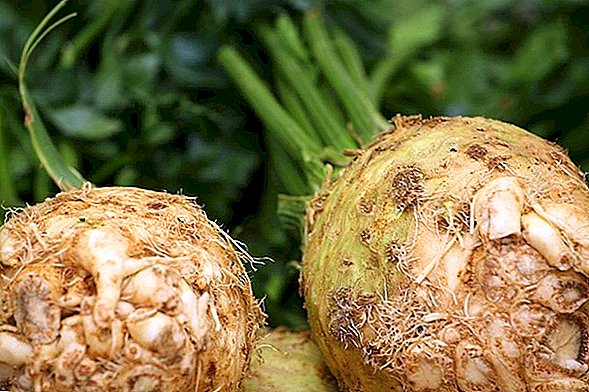
- Sheet - this form is characterized by a strongly branched, fibrous root system and a lush, leafy rosette, rising on high, thin petioles. The value is made up of leafy plates of the plant.

- Stalked - In this form, the roots are not formed at all. Scapes very high up to 1 m, thickened. Most varieties of this form require the use of bleaching techniques in the process of cultivation. This is necessary to lighten the petioles and improve their taste, namely, to partially eliminate bitterness.
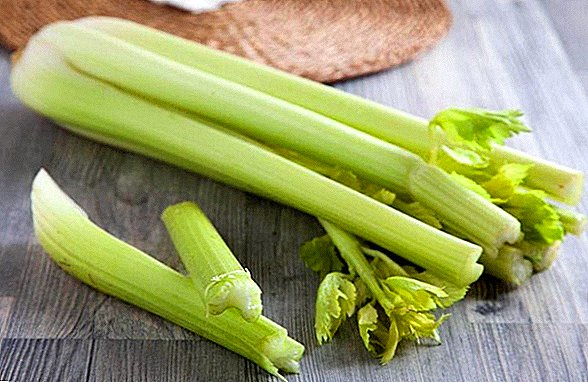
Celery is represented by biennial and annual plants. Under natural conditions, it is found on swampy soils and salt marshes. Leaves twice pinnately cut. Flowers are formed at the tips of the shoots. Collected in inflorescences umbrella type. Painted in white and green.
Rules for the selection of seed for growing on the windowsill
For breeding celery, you can use:
- seeds;
- roots;
- stalk stalks.
Mainly for the cultivation of celery at home using seed method of reproduction. Before buying seeds, you need to decide on the type of plant that is right for you. It is worth considering that seed does not have good germination, so it is better to take more. Be sure to pay attention to the shelf life, because after 2 years from the time of collection, seed germination is reduced by another 50%. 
When selecting seed material you should be guided by the following rules:
- The expiration date of the seeds should expire no earlier than one year from the date of purchase.
- Take the seeds of plants that are characterized by high yields.
- To give preference to leaf and root varieties, since petioles require additional bleaching, which is difficult to organize at home.
With home cultivation, maturation periods do not matter.
Important! When planting root crops, planting material will have to be changed every 3-4 months.
How to grow celery at home
Even the early varieties of celery are characterized by a long growing season. Culture is not particularly demanding with respect to care. The main thing is to prepare:
- seed material;
- select suitable containers;
- prepare a nutrient substrate.
Did you know? Celery is a natural aphrodisiac and Viagra for men. The fact is that its composition contains the hormone Androsterone, which is a direct derivative of testosterone, and is responsible for sexual desire, as well as the formation of secondary sexual characteristics (muscle corset).
Capacity selection
For planting seeds, it is better to give preference to the overall oblong plastic container, about 10-15 cm in height and 30 × 20 cm or 20 × 15 cm in size. Focus should be on the drainage holes. There should be a lot of them so that soil does not rot. Before use, the container must be disinfected. To do this, it is washed with soap and then treated with a solution of "Furacilin" (1 tablet per 100 ml of boiling water). After processing, wipe the pot dry. 
Soil preparation
Substrate for planting is better to cook yourself. To do this, mix in equal proportions:
- peat;
- sand;
- leaf humus;
- universal soil for seedlings.
Important! On the germination of seeds takes an average of 14-21 days. All this time it is necessary to maintain the soil moisture in the pot in the range of 50-60%.
Seed treatment
Poor germination of seeds due to the high content of essential oils in their composition. In this regard, planting material, harvested independently or purchased in a store, in any case, will require advance preparation. First, the seeds are soaked for 2-3 hours in a solution of manganese (1 ml of substance per 250 ml of water).  After that, the seeds are transferred to the Appin solution (2 drops / 100 ml of water) for 8 hours. After this time, the seeds are moved to a wet gauze and kept at a temperature of + 20 ... + 23 ° C for 2-3 days before biting. All this time you need to carefully monitor so that the gauze does not dry out. If necessary, it is moistened with a spray of water at room temperature.
After that, the seeds are transferred to the Appin solution (2 drops / 100 ml of water) for 8 hours. After this time, the seeds are moved to a wet gauze and kept at a temperature of + 20 ... + 23 ° C for 2-3 days before biting. All this time you need to carefully monitor so that the gauze does not dry out. If necessary, it is moistened with a spray of water at room temperature.
Landing pattern
Soil before planting must be well moistened. At the bottom of the tank place a layer of expanded clay, approximately 1 cm in height. Grooves are made on the surface of the soil using a match with a depth of 0.5 cm. The seeds are laid out at a distance of 3-4 cm from each other. Top seeds cover with a thin layer of soil. Then the surface of the pot is wrapped with transparent polyethylene and the pots are set aside in a dark room in which the air temperature is maintained within + 22 ... + 25 ° С.
Video: Celery Seed Sowing
Features of care for seedlings after planting
With the emergence of seedlings pots need to be rearranged in a well-lit place with diffused light. The air temperature in the room is reduced to + 15 ... + 18 ° C during the day and + 10 ... + 12 ° C at night. The optimal daylight hours are 10 hours. In the winter period, luminescence or phytolamps will be required. Humidity of the environment should be maintained within 70%.
Did you know? Celery is a product with negative calories. 100 g of it contains 10 kcal, and 25 kcal is spent on the processing of this amount by the human body.
With the advent of 2 true leaves, the root forms dive into separate pots. Petiolate and leafy forms can be swooped by 3 plants in one container. The substrate is taken the same as for the germination of seeds, adding at this stage 10% of the total mass of the substrate of wood ash.
Top dressing and watering of a plant
In the summer, watering should be carried out abundantly, but avoiding waterlogging. In winter, water is introduced less often, but not allowing the soil to dry out. Soil moisture should be kept at around 50% all the time. The water used is separated at room temperature. On average, in summer, watering is done once every 2 days, in winter - once every 3-4 days.  Feeding starts after picking the plants, after 2 weeks. Bring them once every 2 weeks. For this perfect nitrophoska. Consumption rate 1 tbsp. l 10 liters of water. This dressing is brought under the root with water for irrigation. It is best to alternate nitrophoska with wood ash. It is applied to the sheet in solution. In 3 liters of water add 1 tbsp. l ash, insist day, then strain out and spend spraying.
Feeding starts after picking the plants, after 2 weeks. Bring them once every 2 weeks. For this perfect nitrophoska. Consumption rate 1 tbsp. l 10 liters of water. This dressing is brought under the root with water for irrigation. It is best to alternate nitrophoska with wood ash. It is applied to the sheet in solution. In 3 liters of water add 1 tbsp. l ash, insist day, then strain out and spend spraying.
Ground care
The soil should be regularly loosened to a depth of 1-2 cm. Loosening is carried out about once every 3 days.
Protection
When growing celery at home, you need to take care of reliable plant protection from diseases and pests.
Important! If at the time of planting was carried out a complete tillage of the soil and seeds with disinfecting compounds, at home, celery is not affected by pests.
From diseases
Most often, celery suffers from fungal diseases, which are progressing due to high humidity and insufficient quality of preplant treatment of the soil, the seeds themselves:
- chalcosporosis;
- septoriosis;
- powdery mildew;
- fomoz.
 For the purpose of prophylaxis, a solution of "Fitosporin" is used. They sprayed ground part and carry out watering at the root. If plants are affected by the disease, first remove all damaged parts. After that, check the quality of the roots. If they are badly damaged, an urgent change with a complete replacement of the soil is necessary. Watering reduce and regulate moisture. Conduct therapeutic manipulations by spraying plants "Fundazole". For 1 liter of water add 3 g of the drug. You can use the drug in combination 1: 1 with wood ash.
For the purpose of prophylaxis, a solution of "Fitosporin" is used. They sprayed ground part and carry out watering at the root. If plants are affected by the disease, first remove all damaged parts. After that, check the quality of the roots. If they are badly damaged, an urgent change with a complete replacement of the soil is necessary. Watering reduce and regulate moisture. Conduct therapeutic manipulations by spraying plants "Fundazole". For 1 liter of water add 3 g of the drug. You can use the drug in combination 1: 1 with wood ash.Learn more about how to deal with celery pests and diseases.
From pests
Among the pests for celery are dangerous:
- bean aphid;

- carrot fly;
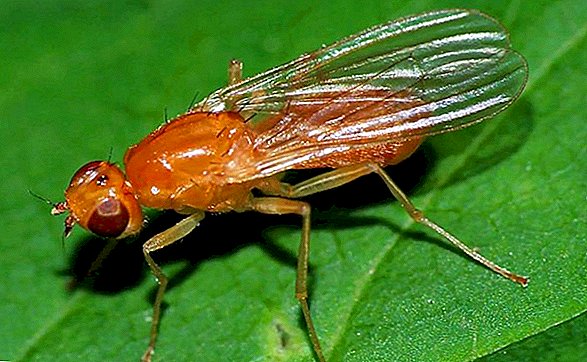
- celery fly.

To combat these pests use tobacco dust. It is powdered ground part and contribute to the soil surface. All damaged parts of the plant are removed and treated with cuts of wood ash or powdered activated carbon.
Celery collection and storage rules
Greens are cut regularly, when it reaches a height of 12-15 cm. Leaf varieties can be used to produce fresh greens throughout the year, then new seeds should be planted. Fresh greens are not subject to long storage. In the refrigerator is stored only for 3 days. For storage, herbs are usually chopped and dried. In this form, it can be stored for about a year, when placed in a dry glass container and kept in a dark, dry place at room temperature. Root varieties are replaced every 3-4 months. The roots are stored much longer.
You will be interested to know how to save celery for the winter.
A month before collecting the roots, you need to cut off the ground part. After removal from the soil, the tops are cut off completely leaving the petioles 2-3 cm long, freeing the root crop from small roots. Storage copies are left with smooth skin without large knots. You can store them on the balcony, if in winter there is maintained a temperature not below 0 ° C. Root vegetables are placed in plastic bags and placed in a box with wet sand.  You can also dry the roots, chop into powder, and use it as a seasoning. In the refrigerator root vegetables can be stored no more than 10 days. Celery is endowed with a variety of beneficial properties for the human body, and it is remarkable that with the observance of the elementary rules of agricultural technology, the crop can be obtained year-round at home.
You can also dry the roots, chop into powder, and use it as a seasoning. In the refrigerator root vegetables can be stored no more than 10 days. Celery is endowed with a variety of beneficial properties for the human body, and it is remarkable that with the observance of the elementary rules of agricultural technology, the crop can be obtained year-round at home.








